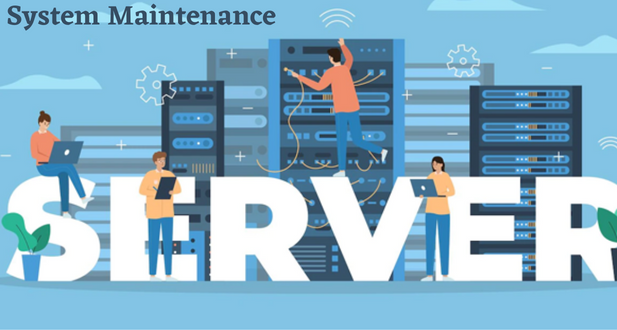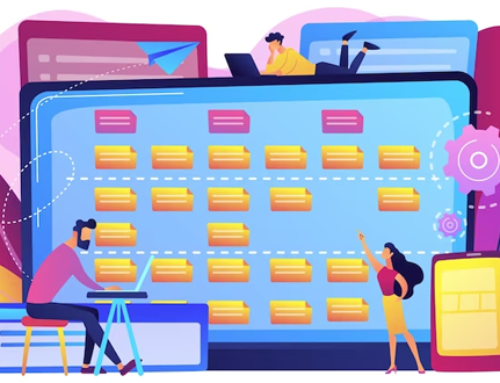System maintenance is a continuous process that includes a wide range of tasks, such as fixing code and design flaws, updating test results and documentation, and improving user support.
The 4 types of Maintenance are:
Many businesses use various maintenance types, while others concentrate solely on one. The most crucial issue is that you are considering how to optimize upkeep while concentrating on internal maintenance.
- Corrective Maintenance
Corrective maintenance entails performing the necessary care to address a problem as soon as it is identified, preventing the problem from worsening. A technician might perform corrective maintenance, for instance, if they are performing a planned inspection and discover a fault in the process, preventing a breakdown or other forms of failure.
- Preventive Maintenance
When using preventative maintenance, you perform planned maintenance to ward off malfunctions and breakdowns. In other words, regular planning is done for duties and chores including lubrication, cleaning, repairs, spare part replacement, and inspections.
- Condition Based Maintenance
Some businesses have the option to get data from their machines in real-time. These data, which can provide information about the state of the machinery, could include temperature, vibration, sound frequencies, and the like.
- Predictive Maintenance
Based on the state of the machinery and equipment, predictive maintenance is used. This is accomplished by keeping an eye on the machines’ health to foretell when a breakdown might happen.
Why is Software Maintenance Required?
Software is a modern reality, and as we all know, reality changes. It seems sensible that when consumers find software useful and important for their daily work, they will seek faster performance and more functional upgrades. Software is easier to maintain than hardware. As a result, the software can be modified to meet the specifications. If the software is to be effective and last for a long time, it must be modified to operate more smoothly. Thus, software maintenance is essential. The following is a list of the reasons why you need software maintenance.
- Fixing bugs
In order to find and correct issues in the software or application, maintenance must be done. This could be the cause of any system failure that yields unanticipated effects, including poor code. Other updates or changes to the hardware, platform, framework, program version upgrade, or any related component of the software can cause bugs to surface.
- Upgrade Access
Upgrades are designed to increase the effectiveness of your system, which can help you get results faster. Your efficiency, scalability, performance, and security will improve with new upgrades adding new features and functions. It will automatically correct any bugs from the previous version. A routine system upgrade minimizes the possibility of a system failure while ensuring quality and testing. The most significant reason to upgrade the system is to prevent using out-of-date versions of your applications.
- User Adoption
Your system has a great potential of being out of date if regular maintenance is not performed. However, tech-savvy clients and users are not. They require new capabilities and features. If you don’t spend money maintaining what users require, eventually your users will begin using other applications or systems. You will suffer more time and financial losses as a result.
- Re-engineering
Your software or application has to be re-engineered. Time is saved with preventive maintenance. You must decide whether to re-engineer the system through data and code restructuring after analyzing the business system’s potential future alterations. Re-engineering will not impair the system’s operation, but it will decrease the system’s durability.
- Business Expansion
It can be challenging to guarantee that your software will carry out necessary tasks on schedule without sufficient upgrades, maintenance, and support. Matching the performance expectation level is likewise challenging. It will only meet the demands of company performance. However, you made an investment because you wanted it to support the expansion of your firm. Therefore, routine upkeep is necessary for the best possible business growth.
The Objective of Maintenance Management:
- Reduce Asset Sudden Breakdown
Minimizing unexpected equipment failure is one of maintenance management’s core goals. In order to prevent unexpected equipment failure, it is one of the fundamental justifications for using maintenance management software.
- Optimize Asset Performance
Using maintenance management software, asset performance is routinely examined. Many companies do maintenance but pay little attention to the tiny things, which results in diminished asset performance.
- Increase Asset Life
If assets are not maintained, asset failure may occur, and when pressure builds on them, the inside of the machine may also suffer. It has an effect on the assets’ quality, which causes a reduction in useful life and efficiency.
- Lower maintenance costs
When assets break down or experience unexpected failure, it results in high maintenance costs since the equipment needs to be repaired to resume operations.
Top five benefits of maintenance management
- Reduces equipment failure and unplanned downtime
This is one of the key justifications for why businesses prioritize maintenance management. Think of a lathe, for example. It will eventually malfunction or break down if it is not kept up with in advance. Effective maintenance management relies heavily on cleaning, and because the lathe machine isn’t getting maintenance, dirt, debris, and other materials will accumulate around it.
- Extends equipment’s longevity
One of the most well-known advantages of maintenance is that a machine that receives routine maintenance will function better and live longer than one that only gets maintenance when it breaks down. That’s because unmaintained equipment will deteriorate more quickly; problems build up and are only corrected when they’ve caused significant harm, which results in irreversible damage.
- Increases workplace safety
Equipment that isn’t working properly can lead to events that compromise workplace safety in addition to being a concern for the manufacturing process. It’s actually fairly straightforward: overworked equipment that isn’t properly maintained could overheat or explode, injuring surrounding personnel.
- Assists in controlling costs
Without routine maintenance, equipment malfunctions would occur more frequently and require many more repairs. Usually, emergency repairs are more expensive, and if extra parts are needed, those prices are further increased. Deliveries for emergency repairs requiring the replacement of spare parts are more expensive than routine deliveries. Any firm may incur costs as a result of reactive maintenance, which causes more urgent repairs, and early replacements.
Conclusion:
Enrolling in annual maintenance without being aware of the precise requirements is improper. Before signing, carefully review the document from all angles. Verify each aspect that is important to your business.
Software maintenance is a must, not an option. You can use your car as an illustration. If you don’t maintain your vehicle, it might result in hundreds of collisions annually. You’ll pay far more for unperformed vehicle maintenance than for routine touch-ups, oil changes, washings, brake inspections, or tire rotations.
Similarly to this, there will be less opportunity for optimal business growth if you neglect to include sustenance in your strategies.
FAQ’S
Using a tree structure, Simple Maintenance enables you to develop a fundamental framework for organizational plans. You can develop your organizational and reporting structures in this way over time.
It is a regular and normal procedure carried out on equipment to stop it from breaking down. Tests, measurements, adjustments, part replacements, and cleaning are all examples of maintenance that is done specifically to avoid faults.
When it comes to buildings or machinery, maintenance abilities are those that are utilized to inspect, identify, and resolve issues. In order to prolong life and maintain the proper operation of different types of equipment, they are also used to carry out simple repairs or conduct preventative actions.
An SMP, or Standard Maintenance Procedure, is essential to preserving the efficiency of your plant as a whole, the safety of your workers, and the condition of your equipment. An SMP is a document that outlines the proper and effective ways to carry out maintenance chores.
A checklist is a list of things you need to confirm, examine, or check. They are employed in a number of industries, including healthcare and construction. A preventative maintenance checklist aids in identifying the upkeep tasks that should be performed on equipment to keep it in excellent shape and increase plant reliability.








